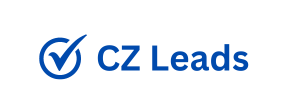Google uses backlinks as one of the main ranking factors. To determine the authority and trust of a site, the quality of links and their weight are taken into account. Thus, high-quality links from thematic sites improve the trust of your resource. At the same time, low-quality links worsen the reputation of the site
And nullify the efforts on search engine optimization.
Given this, it is not surprising that asia mobile number list almost48%digital specialists consider working with links to be one of the most difficult aspects of SEO. But there is good news: regular link audits can detect malicious links in time or identify the most valuable links, which will significantly improve your SEO strategy.
In this article we will tell you what checking a website’s link profile is and how to do it.
How to audit your link mass without going crazy? Practical advice for anyone who wants to be a leader in search results
Read also : Website structure for SEO: recommendations that will help you achieve results
What is a link mass audit and why do it?
A link mass audit is a check of the quality and quantity of backlinks pointing to your site. Thanks to this, you can not only assess the overall state of the link profile, but also study the strategies of competitors that bring traffic.
The audit will show you which domains are linking to your site, which specific pages are receiving links, and analyze other details that will help you evaluate the quality of the links on your site (IP addresses, categories, anchor text, etc.).
Regular checking is important for anyone who cares about ranking high in search results. When your site has a quality link profile, Google considers the content of the resource valuable, relevant and trustworthy.
To summarize, link audit helps in solving the following tasks:
Identifying opportunities for building up a link profile, because an audit will help identify sites that send relevant and high-quality traffic to the site.
Avoiding Penalties: Often, low-quality links are unnatural and obtained through black hat SEO methods. Even if you don’t do it intentionally, your website’s reputation can still suffer, and in the worst case scenario, your resource will fall under Google’s filters .
Identifying broken backlinks . Most often, such links redirect the user to broken pages that will not bring you any benefit. Regular checking will help you detect such links and replace them with relevant ones in order to restore the flow of traffic to the site as quickly as possible.
Eliminate malicious links that prevent you from getting higher rankings in search results. Most audit tools immediately provide recommendations and further algorithm of actions for working with such links.
Analyzing your competitors’ link profile will help you objectively evaluate your own site’s profile and focus on the best strategies for attracting traffic.
How often should inspections be carried out?
The frequency of audits depends on the size of the website and the speed at which it gains new backlinks. A thorough audit quarterly is sufficient, but if you are activelylink building, the audit can be carried out monthly. The audit should also be carried out in the following cases:
after significant matokeo yaliyojaribiwa: ukubwa bora wa picha wa twitter for example, expansion or optimization of its structure;
when the search engine ranking drops or when active SEO promotion does not bring visible results;
after search engine updates;
after a break in SEO promotion, to assess the current state of the link profile.
Read also : How to create an anchor list to increase link mass?
How to conduct a link audit?
The success of an audit depends on the right set of tools for analysis, as well as on the subsequent interpretation of the data. Below we will look at each stage and pay attention to the most important aspects.
Step 1. Selecting tools
There are quite a few tools th phone numbers that SEOs use for auditing these days. The first one that comes to mind is Google’s free treasure for webmasters -Google Search Console. With it, you can evaluate the overall performance of a website in search engines. For example, how the site’s pages rank in SERP for various keywords, whether there are any indexing issues, or check how the site is displayed on different devices.
Link analysis can be done in the section of the same name, located on the left panel. Here you can get data on external and internal links, as well as on domains that link to your site.
In the External Links report you can see:
the total number of backlinks or resources linking to yours;
pages containing the largest number of links;
websites that most often link to your resource. You can also view the pages that are most often linked to for each domain separately;
anchor texts of backlinks, etc.
More details about working with backlinks in Google Search Console were providedin this article.


